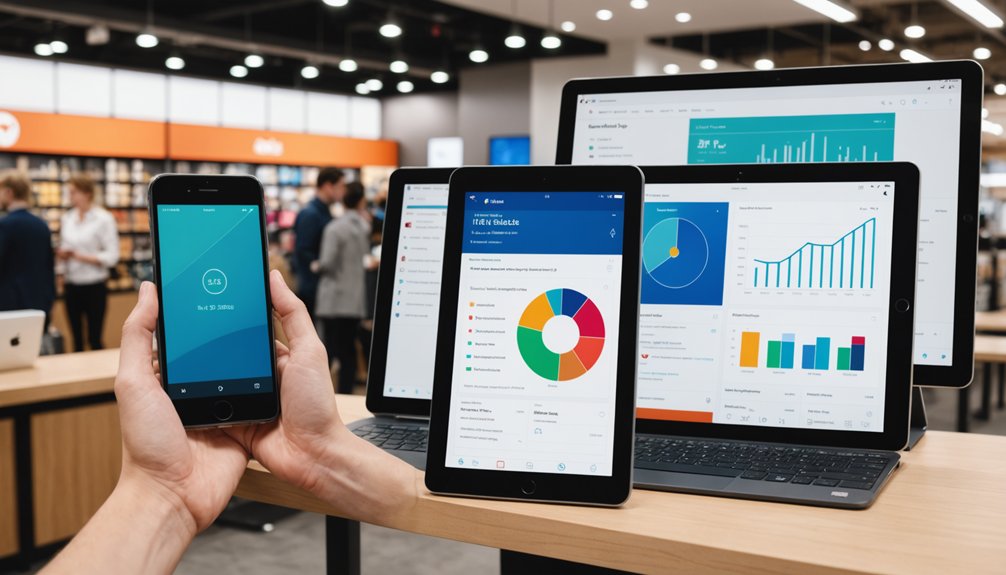Federated learning keeps your data on your device. Period. Instead of shipping personal information to tech companies, only model updates travel back to central servers. Your sensitive stuff stays put. Think of it as learning from everyone without exposing anyone. Companies get smarter AI while you maintain privacy—a rare win-win in today’s data-hungry world. Techniques like homomorphic encryption and secure aggregation add extra protection layers. The technical details get even more interesting.

While tech companies have historically vacuumed up user data like it’s going out of style, federated learning offers a revitalizing alternative to this data-grabbing status quo. This approach flips the script entirely. Instead of shipping your personal information to some mysterious server farm, the machine learning models come to you. Your data stays put. Right where it belongs.
The magic happens on your own device. Your phone, laptop, whatever. The model trains locally, learns what it needs, then only sends back the model updates—not your actual information. Genius, really. This decentralized approach means companies can still create smart, useful AI without knowing what you had for breakfast or which embarrassing medical condition you Googled at 3 AM. The aggregated results are processed centrally while maintaining complete privacy of individual data points.
Privacy protection gets even fancier with additional techniques. Take homomorphic encryption—a mouthful, sure, but it fundamentally allows computations on encrypted data without ever decrypting it. Secure aggregation masks individual contributions so nobody knows exactly what you contributed. It’s like being in a crowd where everyone’s wearing the same disguise.
This isn’t just theoretical tech babble. Real organizations are using federated learning right now. Healthcare institutions collaborate on medical models without sharing sensitive patient records. This ethical AI approach addresses growing concerns about potential misuse of sensitive information while allowing for beneficial applications. The technology also shows impressive performance across various model architectures, with FedAvg algorithms achieving over 98% accuracy in testing. Financial companies improve fraud detection without exposing customer transactions. The applications are growing daily.
Of course, it’s not all sunshine and rainbows. Technical challenges exist. Different devices have varying data quality. Balancing security with efficiency remains tricky. Communication between devices and servers needs optimization. Transfer learning techniques can help reduce training time and enhance model performance across different domains.
But let’s be clear: federated learning represents a fundamental shift in how AI develops. It proves we don’t need to sacrifice privacy at the altar of technological progress. Your information stays yours. The model learns what it needs. Companies get their insights. Everybody wins. Almost makes you believe in technology again. Almost.
Frequently Asked Questions
What Industries Benefit Most From Federated Learning?
Healthcare tops the list of industries benefiting from federated learning. They can train models without violating HIPAA or GDPR. Neat trick.
Financial services come in strong too – fraud detection without sharing sensitive transaction data.
Consumer electronics companies love it for keeping user data on devices. Smart.
Other winners include autonomous vehicles, supply chain management, and energy grids. Privacy matters, and these industries have the most to lose if data gets compromised.
How Does Federated Learning Impact Battery Life on Mobile Devices?
Federated learning can be a battery hog, no question about it. Training models locally demands serious processing power.
But here’s the thing – most implementations are actually pretty smart about it. Training typically kicks in only when devices are idle and charging. Companies schedule these computational bursts during downtime, like when you’re sleeping.
The impact? Minimal for average users. Your phone isn’t secretly draining while you’re scrolling through social media. Smart scheduling makes all the difference.
Can Federated Learning Work With Limited Internet Connectivity?
Yes, federated learning can work with limited connectivity, but it’s not always pretty.
Systems adapt through techniques like caching updates during disconnections, running multiple local training cycles, and using asynchronous updates that don’t require constant connection.
Prioritization helps too—critical updates go first when bandwidth returns.
It’s basically designed for real-world networks. Not perfect, mind you. Devices might need more local processing power to compensate for spotty connections.
What Algorithms Perform Best in Federated Learning Environments?
Performance leaders in federated learning? It depends.
FedAvg works well for balanced data scenarios—simple but effective. Non-IID data? Try FedDyn or HyFDCA.
Privacy-obsessed environments lean on Secure Aggregation and DP-Fed, though accuracy takes a hit.
Communication constraints? FedSVRG shines by reducing update frequency.
Mobile applications often default to lightweight versions of FedAvg.
No silver bullet here. The best algorithm matches your specific constraints—data distribution, privacy needs, and network limitations.
How Much Computational Power Do Client Devices Need?
Client devices need enough juice to handle model training locally. Requirements vary wildly. Basic federated tasks might run on smartphones with decent processors, while complex models demand serious hardware.
Memory? Critical. Devices need RAM for model parameters and datasets. Battery drain is real—training can suck power like nobody’s business.
Networks matter too. Some systems adapt to device capabilities, giving weaker devices simpler tasks. No one-size-fits-all answer here. Depends on model complexity, period.




